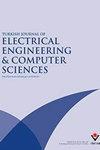TAPU:基于测试和拾取的无线传感器网络k-连通性恢复算法
IF 1.5
4区 计算机科学
Q4 COMPUTER SCIENCE, ARTIFICIAL INTELLIGENCE
Turkish Journal of Electrical Engineering and Computer Sciences
Pub Date : 2019-04-01
DOI:10.3906/ELK-1801-49
引用次数: 4
摘要
如果任意k-1个任意节点停止工作,则k连接无线传感器网络保持连接。移动辅助k -连通性恢复的目的是在节点可能出现故障后,通过将节点移动到必要的位置来保持网络的k -连通性。本文提出了一种保证最优移动代价的k-连通性恢复算法TAPU。我们的算法在最佳和最坏情况下都提高了之前方法(MCCR)的时间和空间复杂性。在该算法中,将节点分为安全组和不安全组。安全节点的故障不会改变网络的k值,而不安全节点的故障会降低网络的k值。不安全节点发生故障后,生成故障节点的最短路径树。每个节点从一个安全节点移动到根节点的代价最小,开始移动到树中的父节点。TAPU已经在仿真和测试平台环境中实现,包括Kobuki机器人和Iris节点。测量结果表明,TAPU找到的最佳移动速度比MCCR快79.5%,内存使用比MCCR低50%,成本比贪心算法低59%。本文章由计算机程序翻译,如有差异,请以英文原文为准。
TAPU: Test and pick up-based k-connectivity restoration algorithm for wireless sensor networks
A k-connected wireless sensor network remains connected if any k-1 arbitrary nodes stop working. The aim of movement-assisted k -connectivity restoration is to preserve the k -connectivity of a network by moving the nodes to the necessary positions after possible failures in nodes. This paper proposes an algorithm named TAPU for k-connectivity restoration that guarantees the optimal movement cost. Our algorithm improves the time and space complexities of the previous approach (MCCR) in both best and worst cases. In the proposed algorithm, the nodes are classified into safe and unsafe groups. Failures of safe nodes do not change the k value of the network while failures of unsafe nodes reduce the k value. After an unsafe node’s failure, the shortest path tree of the failed node is generated. Each node moves to its parent location in the tree starting from a safe node with the minimum moving cost to the root. TAPU has been implemented on simulation and testbed environments including Kobuki robots and Iris nodes. The measurements show that TAPU finds the optimum movement up to 79.5% faster with 50% lower memory usage than MCCR and with up to 59% lower cost than the greedy algorithms.
求助全文
通过发布文献求助,成功后即可免费获取论文全文。
去求助
来源期刊

Turkish Journal of Electrical Engineering and Computer Sciences
COMPUTER SCIENCE, ARTIFICIAL INTELLIGENCE-ENGINEERING, ELECTRICAL & ELECTRONIC
CiteScore
2.90
自引率
9.10%
发文量
95
审稿时长
6.9 months
期刊介绍:
The Turkish Journal of Electrical Engineering & Computer Sciences is published electronically 6 times a year by the Scientific and Technological Research Council of Turkey (TÜBİTAK)
Accepts English-language manuscripts in the areas of power and energy, environmental sustainability and energy efficiency, electronics, industry applications, control systems, information and systems, applied electromagnetics, communications, signal and image processing, tomographic image reconstruction, face recognition, biometrics, speech processing, video processing and analysis, object recognition, classification, feature extraction, parallel and distributed computing, cognitive systems, interaction, robotics, digital libraries and content, personalized healthcare, ICT for mobility, sensors, and artificial intelligence.
Contribution is open to researchers of all nationalities.
 求助内容:
求助内容: 应助结果提醒方式:
应助结果提醒方式:


